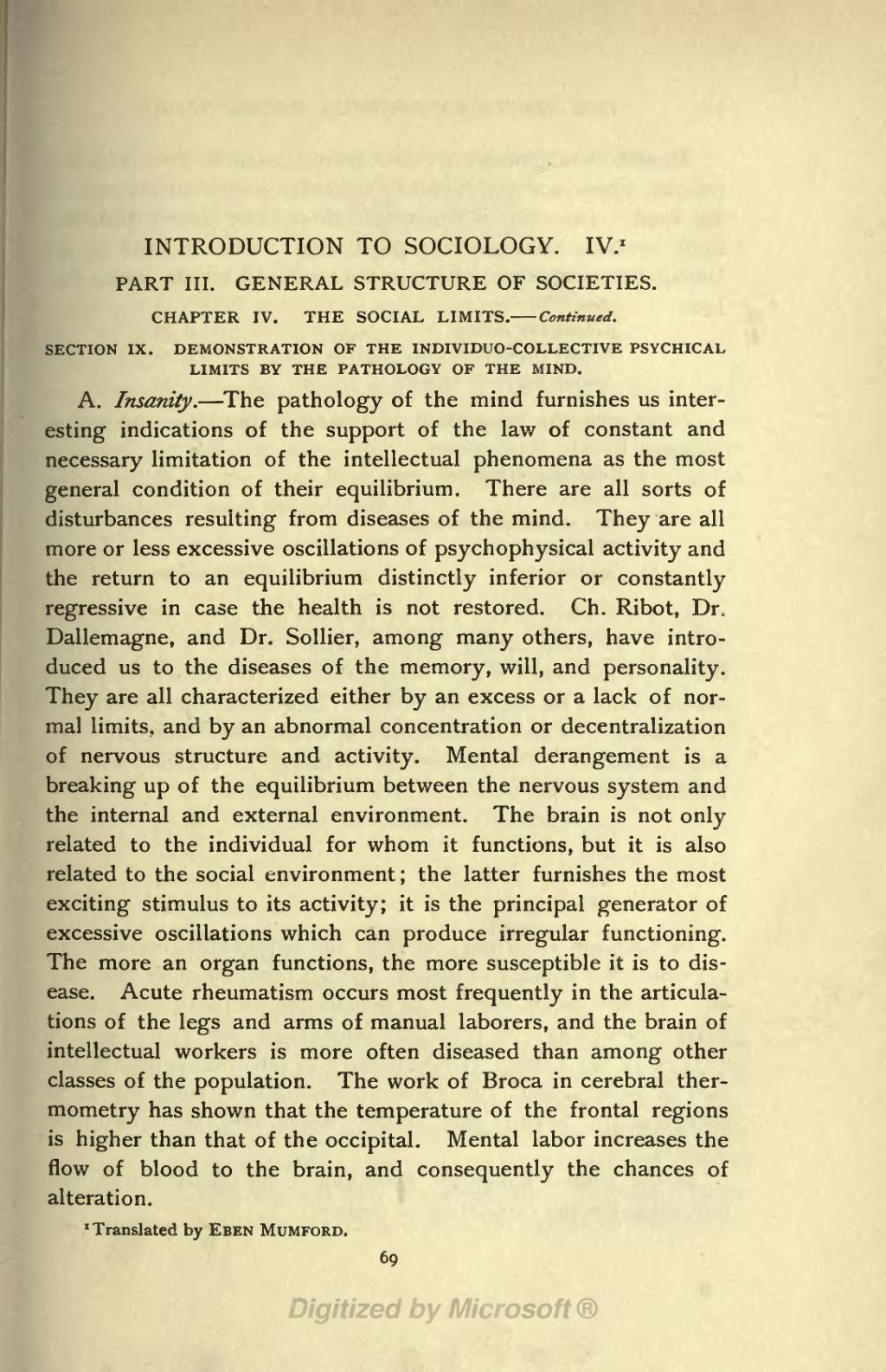INTRODUCTION TO SOCIOLOGY. IV. 1 PART III. GENERAL STRUCTURE OF SOCIETIES.
CHAPTER IV. THE SOCIAL LIMITS. Continued.
SECTION IX. DEMONSTRATION OF THE INDIVIDUO-COLLECTIVE PSYCHICAL LIMITS BY THE PATHOLOGY OF THE MIND.
A. Insanity. The pathology of the mind furnishes us inter- esting indications of the support of the law of constant and necessary limitation of the intellectual phenomena as the most general condition of their equilibrium. There are all sorts of disturbances resulting from diseases of the mind. They are all more or less excessive oscillations of psychophysical activity and the return to an equilibrium distinctly inferior or constantly regressive in case the health is not restored. Ch. Ribot, Dr. Dallemagne, and Dr. Sollier, among many others, have intro- duced us to the diseases of the memory, will, and personality. They are all characterized either by an excess or a lack of nor- mal limits, and by an abnormal concentration or decentralization of nervous structure and activity. Mental derangement is a breaking up of the equilibrium between the nervous system and the internal and external environment. The brain is not only related to the individual for whom it functions, but it is also related to the social environment; the latter furnishes the most exciting stimulus to its activity; it is the principal generator of excessive oscillations which can produce irregular functioning. The more an organ functions, the more susceptible it is to dis- ease. Acute rheumatism occurs most frequently in the articula- tions of the legs and arms of manual laborers, and the brain of intellectual workers is more often diseased than among other classes of the population. The work of Broca in cerebral ther- mometry has shown that the temperature of the frontal regions is higher than that of the occipital. Mental labor increases the flow of blood to the brain, and consequently the chances of alteration.
'Translated by EBEN MUMFORD.
69
